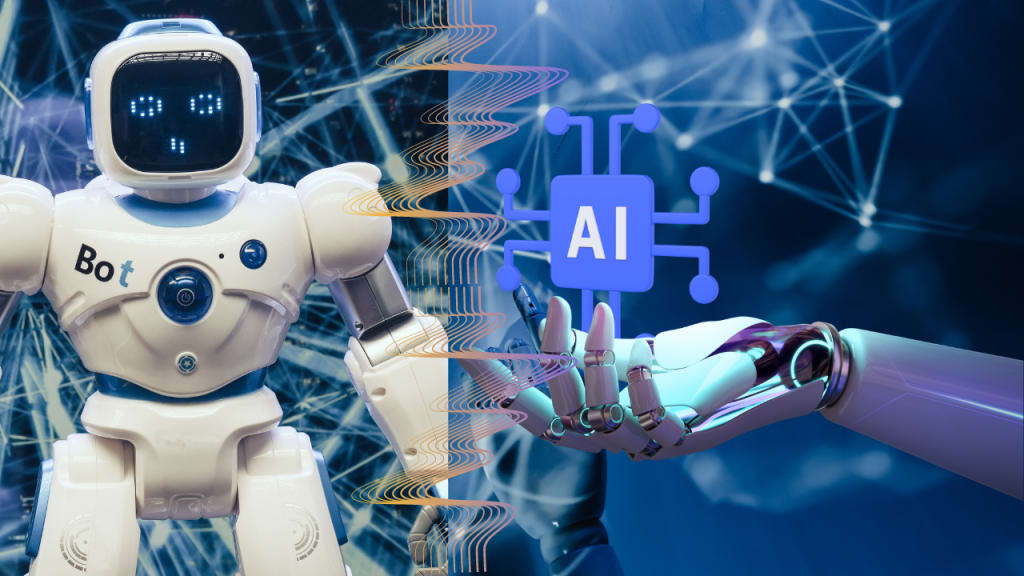The Future of AI: How Artificial Intelligence Will Change the World
Definition of Artificial Intelligence (AI)

Definition of Artificial Intelligence (AI)
Artificial Intelligence, or AI, refers to the simulation of human intelligence in machines that are programmed to think and learn like humans. It encompasses a wide range of technologies and approaches, including machine learning, natural language processing, computer vision, and robotics.
Brief history of AI development
The concept of AI can be traced back to the 1950s, when computer scientist Alan Turing proposed the Turing Test as a way to determine if a machine could exhibit intelligent behavior that is indistinguishable from that of a human. In the years that followed, AI research focused on developing rule-based systems, expert systems, and early forms of machine learning. In the 1980s and 1990s, advances in computer hardware and the development of new algorithms led to renewed interest in AI research. The rise of the internet and the availability of vast amounts of data also played a key role in the development of modern AI techniques, such as deep learning, which has led to significant breakthroughs in areas such as image recognition and natural language processing. Today, AI is used in a wide range of applications and is expected to have a profound impact on various industries and aspects of our lives.
Advancements in AI technology
1.Natural Language Processing (NLP)
Natural Language Processing (NLP) is a branch of AI that focuses on the interaction between computers and human language. It involves the development of algorithms and models that enable computers to understand, interpret, and generate human language. NLP technology has advanced significantly in recent years, with breakthroughs in areas such as language translation, sentiment analysis, and text generation.
2.Computer Vision
Computer vision is a branch of AI that deals with how computers can interpret and understand visual information from the world, such as images and videos. This technology has been used to develop systems that can perform tasks such as image recognition, object detection, and facial recognition.
3.Machine Learning
Machine learning is a subset of AI that involves the development of algorithms and models that enable computers to improve their performance on a task without explicit programming. There are three main types of machine learning: supervised learning, unsupervised learning and reinforcement learning.
4.Deep Learning
Deep learning is a subset of machine learning that utilizes neural networks with multiple layers to learn from data. These neural networks can be trained to perform a wide range of tasks, such as image recognition, natural language processing, and speech recognition. The use of deep learning algorithms has led to significant breakthroughs in many areas of AI, and is currently the state-of-the-art technique in many applications.
Impact on various industries
1.Healthcare
Artificial intelligence is being applied in healthcare in various ways, such as in medical imaging, drug discovery, and precision medicine. AI-powered tools can assist doctors in diagnosing diseases, such as cancer, by analyzing medical images, and help develop personalized treatment plans. Additionally, AI can be used to analyze large amounts of patient data, and identify patterns that can help predict and prevent diseases.
2.Transportation
AI is being used in transportation to improve safety and efficiency. Self-driving cars and trucks, for example, use AI to navigate roads and make decisions. Additionally, AI-powered traffic management systems are being developed to improve traffic flow and reduce congestion. Drones are also being used for package delivery and inspections.
3.Finance
In the financial industry, AI is being used for tasks such as fraud detection, risk management, and investment management. AI algorithms can analyze large amounts of data and identify patterns that can indicate fraudulent activity. Additionally, AI can assist in risk management by identifying potential financial risks and helping to develop strategies to mitigate them.
4.Manufacturing
AI is being used in manufacturing to improve efficiency and reduce costs. For example, AI-powered robots and drones can perform tasks such as assembly, inspection, and maintenance. Additionally, AI can be used to optimize production processes and supply chain management.
5.Retail
In the retail industry, AI is being used for tasks such as product recommendations, personalization, and supply chain optimization. AI-powered chatbots can assist customers with their shopping experience and provide personalized product recommendations. Additionally, AI can be used to optimize inventory management, and ensure that the right products are in the right place at the right time.
Ethical concerns and challenges
1.Bias in AI
One of the major ethical concerns with AI is the potential for bias. Bias can occur when the data used to train an AI model is not representative of the population it will be used on, or when the algorithms used to make decisions are inherently biased. This can result in discriminatory outcomes, such as denying certain groups of people access to services or opportunities.
2.Job displacement
Another ethical concern is the potential for AI to displace human jobs. As AI systems become more advanced and can perform tasks that were previously done by humans, there is a risk that certain jobs will become obsolete. This could lead to increased unemployment and economic inequality.
3.Privacy and security
As AI systems are often designed to collect and analyze large amounts of data, there are concerns about privacy and security. If data is not properly secured, it can be accessed by malicious actors, resulting in data breaches and potential harm to individuals. Additionally, there are concerns about the use of AI for surveillance and the potential for it to be used to infringe on civil liberties.
Conclusion
Artificial Intelligence (AI) is the simulation of human intelligence in machines.
Advancements in AI technology, such as natural language processing, computer vision, machine learning, and deep learning are driving significant breakthroughs in various fields.
AI is expected to have a profound impact on industries such as healthcare, transportation, finance, manufacturing and retail.
However, there are also ethical concerns and challenges associated with the development and implementation of AI, such as bias, job displacement, and privacy and security.
Potential future developments in AI:
Advancements in AI are expected to continue, with the potential for even more sophisticated and powerful AI systems.
AI is expected to play a greater role in decision-making, and is likely to be integrated into more aspects of our lives, such as homes and cities.
Research in areas such as explainable AI and trustworthy AI is expected to gain more attention to ensure that AI systems are transparent, accountable and fair.
Call to action for responsible development and implementation of AI technology:
It is important to ensure that the development and implementation of AI is done in a responsible and ethical manner. This requires ongoing research and collaboration between the AI community, policymakers, and other stakeholders to address ethical concerns and challenges. It is also important to invest in education and training to ensure that individuals are equipped with the skills necessary to work in an AI-driven economy. It is crucial to consider the potential impact of AI on society and take steps to mitigate any negative effects.
About the Creator
Mr.Blog
Im a content writer
Enjoyed the story? Support the Creator.
Subscribe for free to receive all their stories in your feed. You could also pledge your support or give them a one-off tip, letting them know you appreciate their work.






Comments
There are no comments for this story
Be the first to respond and start the conversation.